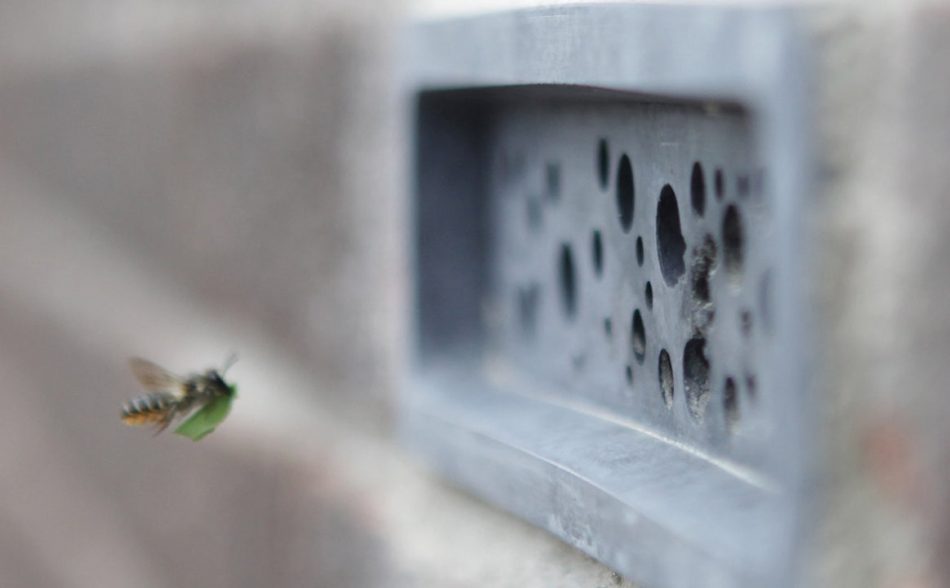The city of Brighton and Hove in England have introduced a new planning law worth buzzing about—the law requires new buildings to include special bricks that have little nests for solitary bees.
The Brighton & Hove Council’s policy specifies that all new buildings over five meters tall should have bee bricks and bird nesting boxes that are suitable for swifts, a bird species that is experiencing a grave decline in population. The idea behind the law is to increase opportunities for biodiversity and to support the pollinators on which natural ecosystems rely.
What are solitary bees?
As the name suggests, solitary bees are bees that live alone, but that doesn’t mean that these independent pollinators decided to leave their home hive and try their luck out there on their own.
Green&Blue, a company that makes bee bricks, states on their site that solitary bees are actually their own kind of bee. In fact, they make up around 250 of the approximately 270 bee species found in Britain—and even though they live alone, they often like to nest close to one another.
Another interesting fact about solitary bees is that they do not produce honey, nor do they have a queen. However, they do pollinate, and all pollinators (not just honey bees!) play a crucial role in making sure that crops, flowers, trees, and other vegetation can continue to thrive on this planet.
What are the bee bricks like?
The special bee bricks are the same size as conventional bricks but integrate a series of narrow openings that resemble spaces where solitary bees are known to nest.
According to Faye Clifton from Green&Blue, these bricks are recreating an existing type of nest that is popular with solitary bees. “Solitary bees nest in crumbling mortar work and old brickwork,” Clifton explains, “but modern buildings are so perfect that all the cavities are blocked… we’re putting a habitat into each building in the same way that has occurred naturally for hundreds of years.”
While those behind the law acknowledge that this solution alone will not solve the biodiversity problem, the natural world needs all the support we can provide. “Bee bricks are just one of quite a number of measures that really should be in place to address biodiversity concerns that have arisen through years of neglect of the natural environment,” declares Robert Nemeth, a property developer, professional beekeeper, and the councilor who started this initiative back in 2019.
“Increased planting, hedgehog holes, swift boxes, and bird feeders are all examples of other cheap and simple ideas that, together, could lead to easy medium-term gains,” he adds.
Risks and bee-nefits
Some scientists have brought up concerns that the bee bricks may attract mites and increase the spread of disease, and that, as Dave Goulson, a professor of biology at the University of Sussex, says, the bricks “could easily be used as ‘greenwash’ by developers.”
In response, Francis Gilbert, a professor of ecology at the University of Nottingham asserts that mites shouldn’t be a problem. “There will be beneficial microbes in the holes as well, so they should not be cleaned. So bee bricks are an unequivocally good thing,” he says.
Lars Chittka, a professor in sensory and behavioral ecology at Queen Mary University is confident that the bees would be able to mitigate potential issues on their own, “which should to some extent counterbalance the risks that come with such long-term nesting opportunities.”
According to Nemeth, the benefits outweigh potential risks, saying that “it’s always easy to list the drawbacks with any solution but the key is to keep trying.”
“I’ve seen many great examples of solitary bees using the bricks and am won over to their potential,” he adds.
To determine the impact of the Brighton policy, Clifton is hoping to conduct a five-to-10-year study. “We want to map the impact across the country,” she says.
Brighton isn’t the only city that has passed planning laws that support pollinators; other cities like Cornwall and Dorset have also adopted similar policies.










